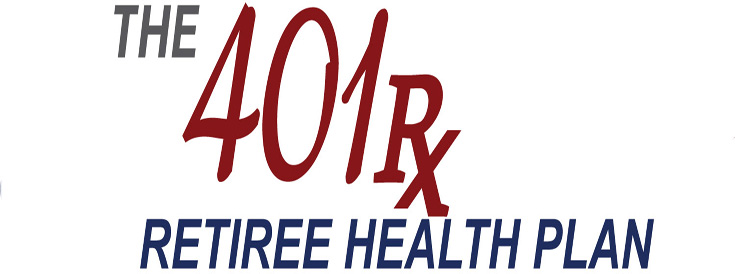A Whole New Way of Thinking about - Plan Design Flexibility
How it Works
Customization is the key word in retiree health care planning and The 401Rx Plan® is the vehicle of choice for professionals and small to mid-sized business owners. As a single employer plan, each employer is able to personalize many key elements including, level of benefits, contribution amounts, contribution timing, classes of excluded employees, and the funding and investment vehicles. The 401Rx Plan® is not a multiple employer plan and employer contributions are not commingled with those of other employers.
Benefits
Employers have the flexibility to select from among six different benefits. They may select one, any combination, or all of them if they choose.
- Medicare Part B Premiums
- Medicare Deductibles and Co-Pays
- Medicare Part D Premiums
- Medicare Part D Deductibles and Co-Pays
- Vision and Dental
- Long Term Care
Retirement Age
Employers have the ability to determine the “retirement age” at which an employee will be eligible to receive benefits under The 401Rx Plan®. Permissible retirement ages are 50, 55, 60, 62, 65, and 70.
(NOTE: Professional sports professions may elect younger retirement ages.)
Funding
Once the employer has determined the type of benefits to be offered, the maximum funding amount is actuarially calculated. This determines the amount an employer would need to contribute on an annual basis in order to fully fund the selected benefits. The maximum contribution amount can be expected to change every year based upon actuarially considered factors such as attrition, medical inflation and investment earnings. Each year the employer will have the election of two funding methods:
- Maximum Funding – The employer elects to fully fund the amount necessary to provide the targeted benefit package. This amount is designed so that upon an employees’ retirement all of his/her post-retirement health needs for the selected benefit package will be fully reserved.
- Level Funding – The employer elects to fund a fixed amount or fixed percentage of the maximum amount for each employee. This can be an amount lower than the maximum funding amount. The employer will have the opportunity, but no obligation, to catch up any underfunded amount in subsequent years.
Eligibility
The Plan must be offered for all employees on a non-discriminatory basis. Employers may, however, limit participation by excluding employees who are:
- ✔ Covered by a collective bargaining agreement
- ✔ Under age 21
- ✔ Have less than three years of credited service
- ✔ Seasonal, temporary or part-time
- ✔ Non-resident aliens receiving non-U.S. sourced income
Vesting
Under ERISA there is no requirement that post-retirement health benefits be subject to a vesting schedule. Employers may, however, desire to establish a vesting schedule to meet their business objectives. Available options are:
- No Vesting – An employee must be employed by the company at age 65 (or other benefit eligibility age) to be entitled to any benefits.
- Cliff Vesting – An employee becomes fully vested only if he/she works a specified number of years.
- Step Vesting – An employee becomes gradually vested over a term of years.
Flexibility
- Employers are permitted to adjust their contributions each year and can skip a year if necessary.
- requirements. Employees who leave prior to retirement will forfeit all benefits. Contributions previously made on behalf of those
- employees will be reallocated to the account of the remaining employees.
"Our problems are man-made, therefore they may be solved by man. And man can be as big as he wants. No problem of human destiny is beyond human beings."
John F. Kennedy







